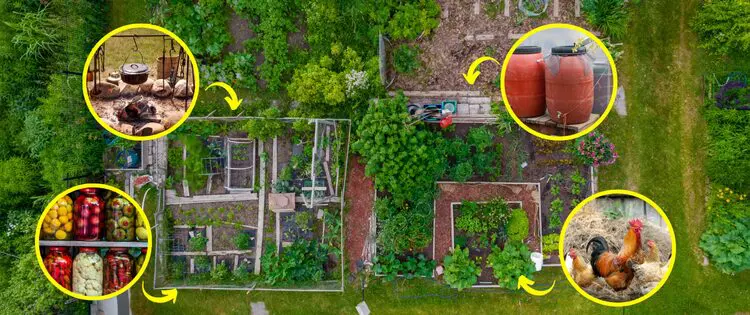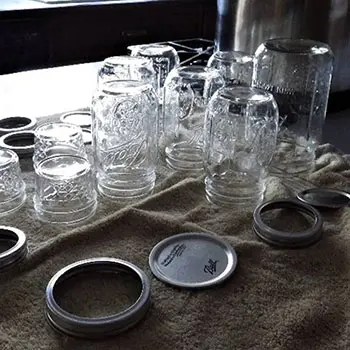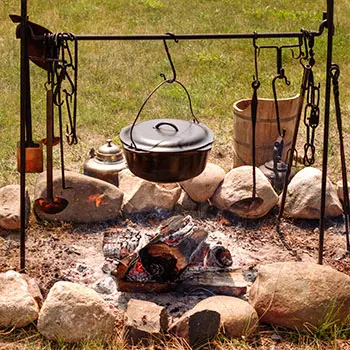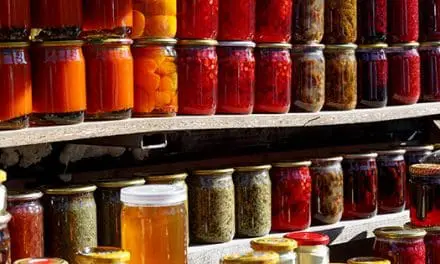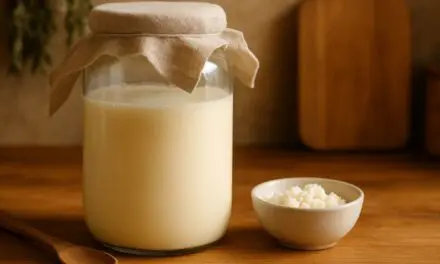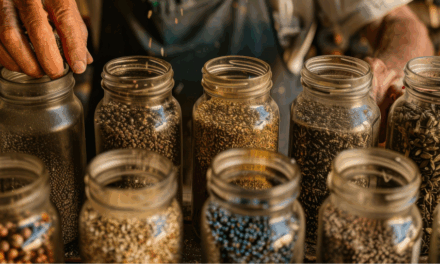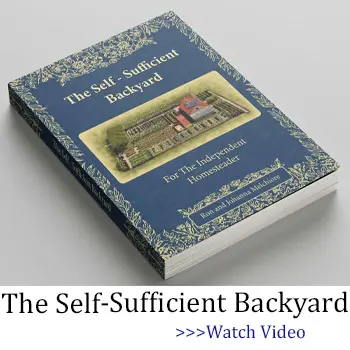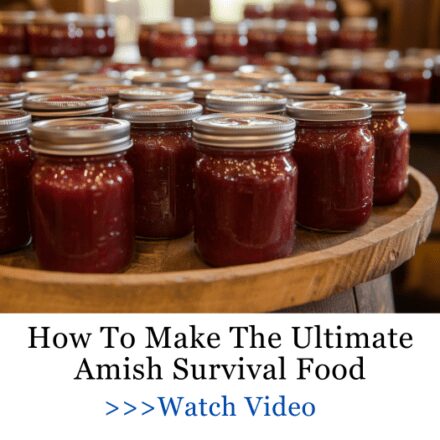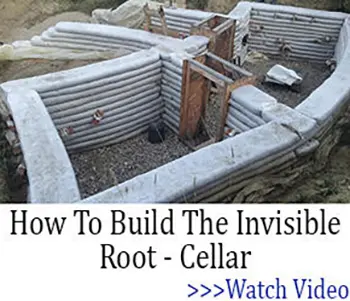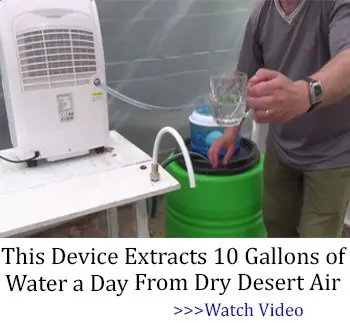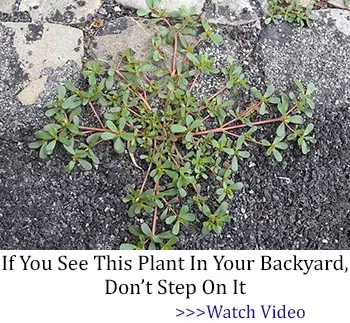Homesteading skills were first defined by our pioneer ancestors. It’s essentially the ability to make use of available resources in our surroundings to survive. What they basically did was live off the land.
Homesteading Skills Defined
The skills that homesteaders learned helped them grow food, raise livestock, find water, sew clothing, and produce heat in winter. They also know how to cool their homes in summer. Additionally, they developed first aid skills. These include improvising bandages, slings, and splints, and using herbal treatments.
They also mastered weapon improvisation for hunting and defense. Plus, they use fishing techniques like traps and nets. Success in hunting or fishing often requires learning basic cooking and food preservation techniques.
This lifestyle may sound noble and traditional. However, it’s smart to evaluate the homesteading skills you already have and those you should learn. At the end of this guide, we’ll recommend some essential books for your library. Remember, relying on the Internet for answers during a crisis might not work. Having physical books can make all the difference.
Crisis Defined
A crisis is any event or series of events that disrupts the basic goods and services we rely on. For instance, the COVID-19 pandemic showed how many goods and services became unavailable or scarce.
Other crises can include catastrophic weather, widespread wildfires, or economic collapse. Extreme situations, like civil unrest or war, are also possibilities.
The effects of a crisis hit us quickly and changed how we live and survive. However, knowing homesteading solutions gives us alternatives when choices are limited and resources run low.
The Primary Homesteading Skills to Consider
It makes sense to wonder what would be affected during a crisis. There’s the possibility that the power grid is down, and the additional possibility that water will not be available or contaminated. Here are the skills to consider as events unfold or cascade during any crisis:
Water Collection, Purification, and Storage 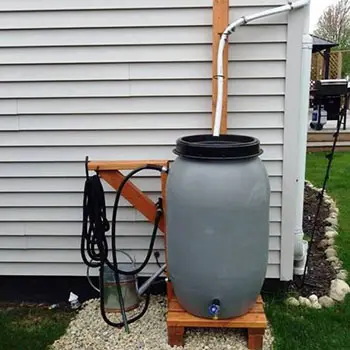
Most people can’t survive more than three days without water. Because of this, water may be the most important resource we need, yet we often take it for granted. That’s why it’s smart to learn how to harvest water from natural sources and understand methods for filtering, purifying, and storing it.
Rainwater collection remains a key skill for homesteaders. For example, the roof of any building can easily collect and channel rainwater into barrels. These barrels work well for storage, but even rainwater needs purification. Debris and bird droppings on roofs make this step necessary.
Boiling is the standard homesteading solution but a small amount of bleach and even iodine can purify water. If taking care of your water stockpile sounds like too much work, you can always try this DIY backpack-sized water generator.
Gardening And Essential Homesteading Skills
Every homestead needs a garden. Many homesteaders go beyond this and create edible forests around their homes. For example, you can plant fruit trees and vines near your house. Instead of flowers, plant vegetables in those spaces.
Fruit trees and vining vegetables still offer beautiful blossoms. The bonus is you can enjoy their fruits when they ripen.
Related: Dwarf Fruit Trees You Can Grow In A Tiny Space
Animal Husbandry
You don’t have to build a pig pen. Many people, even in urban areas, have found raising chickens to be easy and low-impact. Healthy chickens can produce one egg a day. If you have six chickens, you’ll get more than three dozen eggs a week.
Rabbits are another option. They are relatively low maintenance.
Related: Livestock Animals You Should Start Raising For The Upcoming Economic Crisis
Food Preservation Techniques: Essential Homesteading Skills

Think about having canning supplies and equipment on hand. There are also other food preservation methods, such as drying, dehydration, curing, and smoking. Homesteaders knew they would often have a food surplus and always made sure they could preserve the foods they couldn’t consume quickly.
They also dug root cellars to preserve food at a time without refrigeration. In a crisis, the grid may go down, and knowing how to keep foods cold will be a valuable skill.
Preserving food without electricity is essential in a crisis. While root cellars work great, some items like meat, milk, and cheese need more reliable cold storage.
This doesn’t need power to keep your food safe. It’s not a root cellar but an incredibly easy DIY off-grid fridge designed by the Amish that can handle extreme heat, even over 100 degrees. In the next blackout, this invention could save lives, ensuring you have access to vital foods and medicines when you need them most.
Heating in Winter
The standard solution for winter heat was a wood-burning stove. It assumes you have access to a steady supply of firewood, but it’s still worth considering as a heating solution.
Hardwoods like oak, maple, hickory, and ash are best. The wood should be cut, split, and seasoned for at least 6 months to get the best results.
Off-Grid Cooking 
If the power is out and you have no stove you need to improvise. A charcoal grill in the backyard is one place to start but there are many techniques for cooking without power. Figure out what you can do using the materials and fuels available.
In a post-collapse situation, cooking could put you at serious risk. Smells from food can travel up to half a mile, drawing the attention of desperate people. But there’s a solution: this oven that doesn’t require fire, fuel, or produce smoke or smells. This design helps you stay safe while cooking without revealing your location—a critical advantage when security is your priority.
Cooling in Summer
Without electricity and air conditioning, cooling is always a challenge. There are solar-powered fans that can help provide some relief. Proper ventilation can draw cooler air in from the base of the building, while vents near the ceiling draw warm air out.
In a pinch, most basements stay cooler in summer. They are often warmer in winter too. The surrounding soil around a basement holds temperatures better than any structure above ground.
First Aid Supplies and Medicines 
It makes sense to stockpile first aid supplies, including over-the-counter medications for pain relief, congestion, and digestive issues. You should also reserve any prescription medications you might need. Homesteaders didn’t have a pharmacy, but they did have other solutions.
That’s why learning about natural and herbal remedies is important. Even something as simple as a leaf from a plantain plant or lamb’s ear can work as an effective antiseptic bandage substitute. Take the time to learn how herbal medicines can replace OTC medicines and even pharmaceuticals.
In an emergency, medical help might not arrive when you need it most. Knowing how to respond to injuries, illnesses, or other health issues is critical. This doctor-approved guide is designed for such moments, offering clear instructions for managing health emergencies when no help is on the way.
Sewing and Clothing
Stockpile a good supply of needles, threads, fabric, and patches. It also might be wise to learn how to knit with a supply of yarn and knitting needles. And remember to store some extra buttons, zippers, and maybe some Velcro.
Assembling a Homesteading Skills Library
Having stuff stockpiled or even easy access to the materials surrounding you in nature is of little value if you don’t know what to do with the stuff. Here are some books you should track down and keep in your homesteading library:
- The Self-Sufficient Backyard book
- The Modular Backyard Power Plant
- The Amish Ways book
- A Navy SEAL’s Bug-In Guide
- No Grid Survival Projects book
- The Lost SuperFoods book
- Wilderness Long-Term Survival Guide
- The Home Doctor: Practical Medicine for Every Household
- The Forager’s Guide to Wild Foods
- The Lost Book of Herbal Remedies
- The Lost Book of Herbal Remedies II
The number of books you collect is entirely up to you, but having key titles like the ones I’ve listed will give you a solid foundation in homesteading for any crisis.
Adding books that focus on homesteading skills ensures you’re prepared to handle challenges like growing food, raising livestock, preserving harvests, and building self-reliance. These resources are invaluable for mastering the essential homesteading skills needed for sustainable living.
Dutch Oven Recipes Cowboys Survived On
The ONLY Foods You Need to Stockpile (Video)
15 Things You Should Teach Your Children That Can Save Their Lives
I Tried to Live Completely Off Grid for a Month. This Is What Happened

